| Posted | Message |
|---|
Paul Bellamy
5/26/2009 6:42:52 PM | While looking into WWII UK airfield lighting systems in general, I came across a few references to Deenethorpe.
One of these referred to Contact Lighting (44-64 watt bulb medium-intensity system, visible from all angles) being "definitely not required" at Deenethorpe, dating to the end of 1943.
As the airfield was built by J Laing & Sons. during the first half of 1943, and immediately upgraded to full "Class A" specification with the addition of extra loop dispersals to accommodate a USAAF Heavy Bomber Group, it should have been equipped with the standard Drem Mk2 flarepath, orbit circle, approach funnel and taxiway lighting system, which superceded Contact Lighting. The Drem system was a low-intensity (15 watt bulbs) low-visibility lighting system, which would still be visible in clear conditions but wouldn't attract the attention of enemy aircraft during the blackout.
Drem Mk2 runway light components.
Left to right: C6 Flarepath lamp cover, C5 Crossbar lamp cover, coloured filters, reflector and 15w pygmy well-glass fitting.

Deenethorpe also appears to have been later fitted with the AAF's own HILV runway lighting system by mid-1944, which had above-ground 200 watt lamps alongside the main runway and for a further 800-odd yards at each end.
HILV lamp:
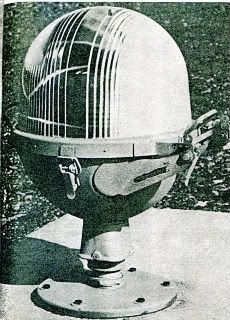
HILV lamps at Ridgewell:
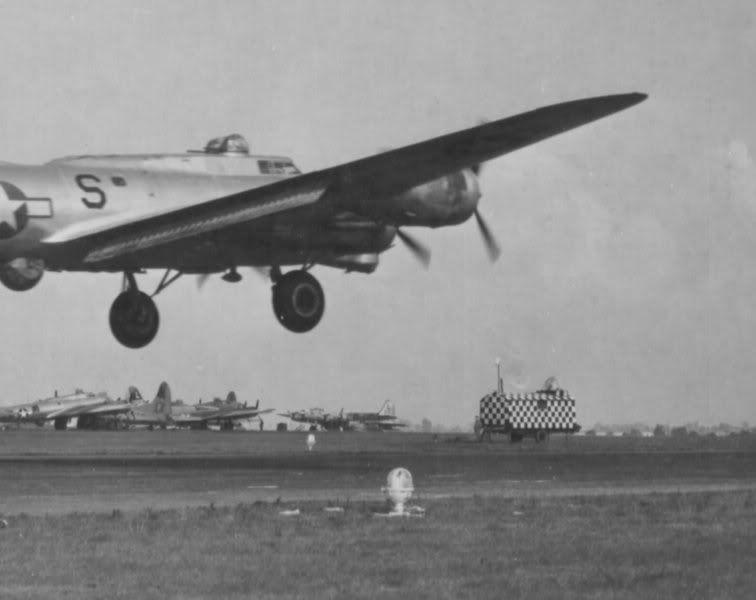
Each system had the lamp units placed at different spacings, so I had a walk around the perimeter track to see if any traces remained, and if so I could work out which was actually installed.
Here's what I found.....
One of many empty Drem Mk2 T1 taxiway light sockets, set 150 feet apart into the perimeter track edge:
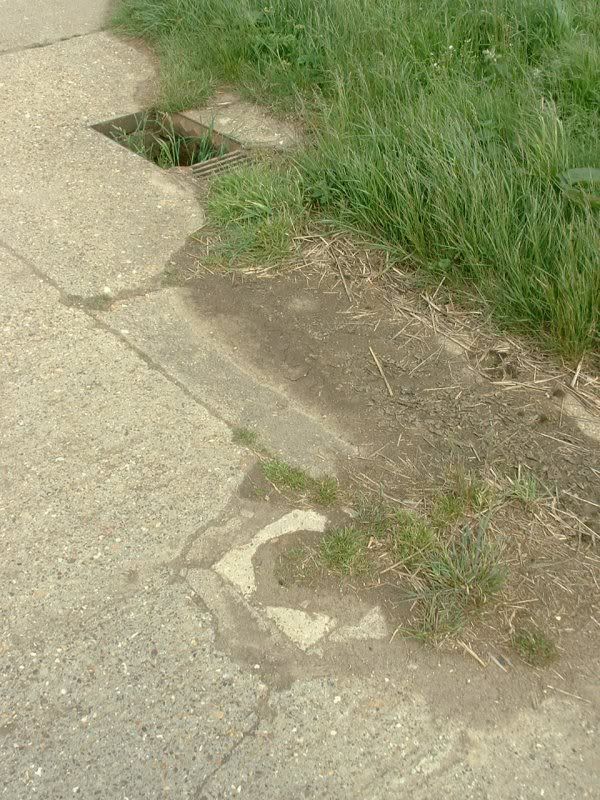
Damaged but complete T1 lamp fitting, found hidden under weeds and covered back up again after the photo was taken:
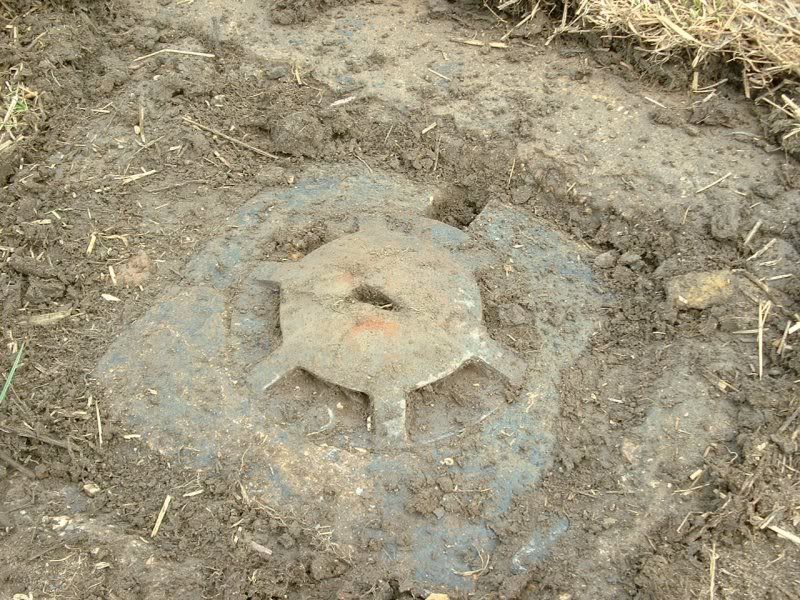
Complete and intact T1 fitting, completely filled with soil as all those I found were:

Smashed T1 fitting, with the glassware still in place:

The above hole contained the bulb, an smashed orange glass filter (since reassembled, photo to follow) and the thick clear glass "dome" broken off from it's housing, along with most of the shattered remmnants of the cast iron cover:
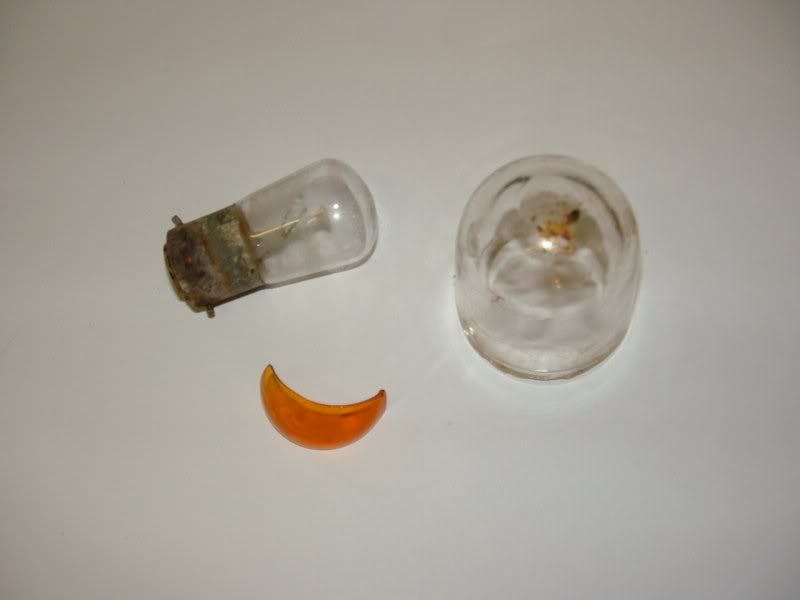
A closeup of the printing on the bulb, the 230 volt 15 watt rating confirming a Drem Mk2 system.
Interestingly, these bulbs are still available over the counter in any DIY store in the UK:
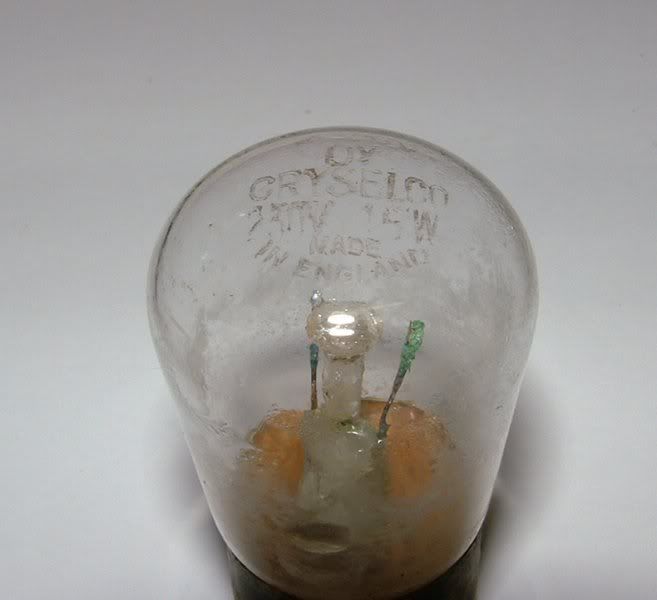
Along the edge of runway 3 were these holes which originally held C6 flarepath lights, 300 feet apart:
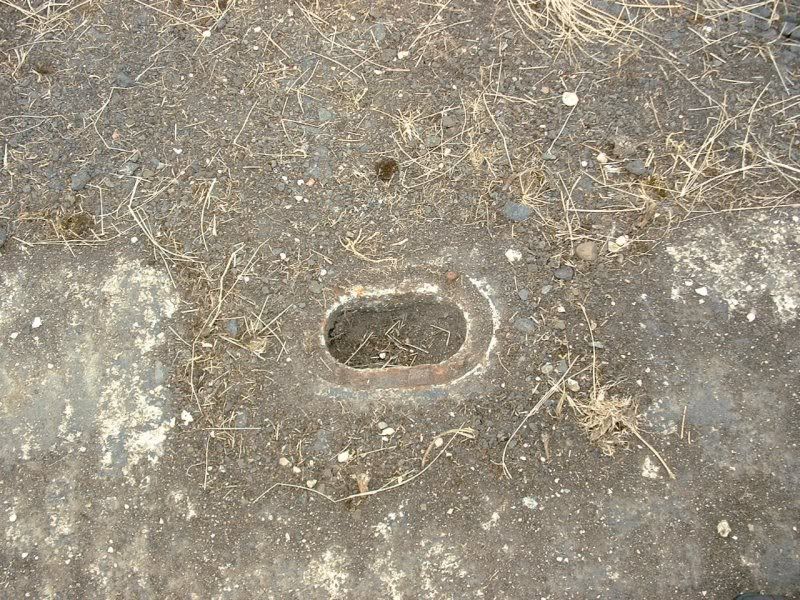
The red marker is in the last one before runway 3 joined the southern end of the main runway, I found a series of four between this spot and the junction with runway 2, about where the tree is in the centre of the photo:
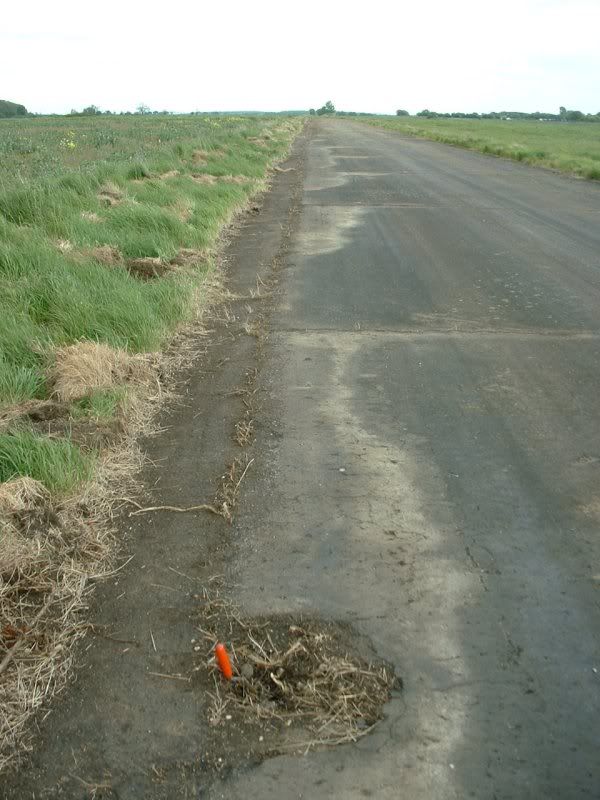
More on-the-ground investigation to be done here.
Taxiway lights should have had a blue filter inside, not orange.
I can only assume that as the smashed fitting was adjacent to a dispersal turn-off it was coloured differently, one of the intact fittings I found was well away from any turnings, so may contain a blue filter when cleaned and examined.
Do any intact runway flarepath fittings remain?
Most bases had all the fittings ripped out for scrap after the war, add to that the inner half of effectively all the perimeter track was grubbed up, the main runway is missing 50 fet from the western side, and most of the other two runways are gone.
However, now I have confirmed spacings it should be a simple, if time-consuming, task to find the locations in the existing areas of concrete.
The main runway has been resurfaced, so any surviving original fittings are likely to be hidden, but some may exist on the remains of runways 2 and 3. It's unlikely any of the crossbar lights survive, but their locations can now be identified and inspected.
The lamps and bases of the HILV system would have been cleared away long ago, as these lights were installed up to 16 feet out from the runway edge and are now in cultivated ground, but as some of the cabling fittings for the Drem system were seen lying in the furrows, maybe some traces could survive.
Dale, Graham, fancy a stroll one afternoon?
(preferably when the microlight club is closed for the day so the main runway can be examined safely? :wink:)
All the best,
Paul
Paul Bellamy

|
Jackie Sharp Sheflin
5/26/2009 7:55:37 PM | Paul,
I am continuously amazed at the amount of information you continue to find! It is very interesting to read.
Jackie

|
Phoenix
5/29/2009 5:46:39 AM | Paul,
Interesting stuff, set up the afternoon stroll and give me a time/date, even weekdays are fine as I am awaiting security clearance before I start with 5001 Sqn. at Wittering so I have time a-plenty 😂
Tallyho
Dale
improvise, adapt, overcome
|
Paul Bellamy
5/29/2009 1:51:48 PM | Will do Dale, I'm thinking mid-late next week, weather depending. Congratulations on the new job!
I've been putting the jigsaw puzzles of bits from the smashed fitting together for the past couple of days.....
Here's the glassware:
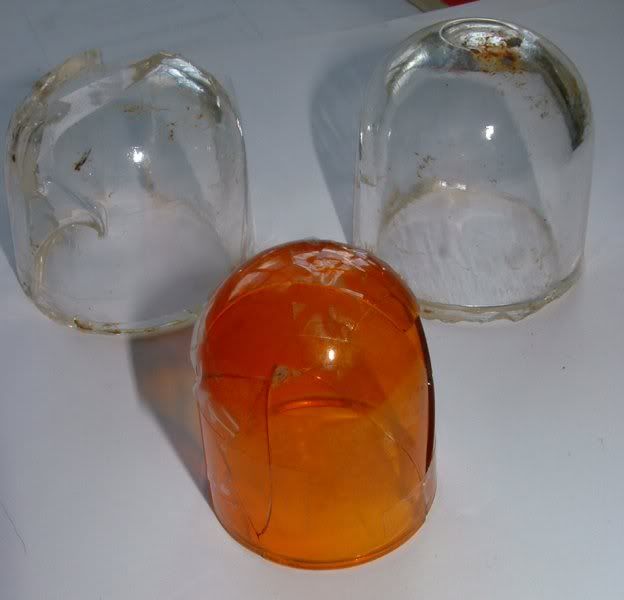
And the cover itself:
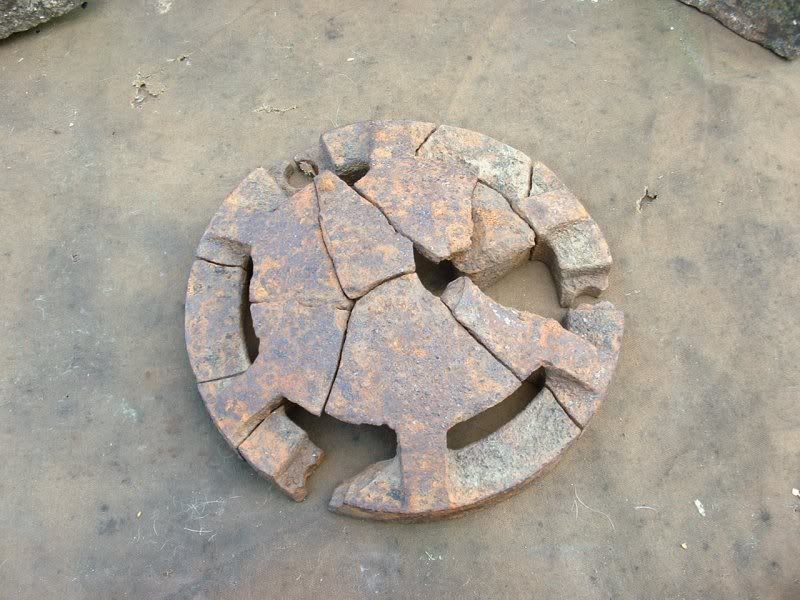

And a little something else I found in the dirt:
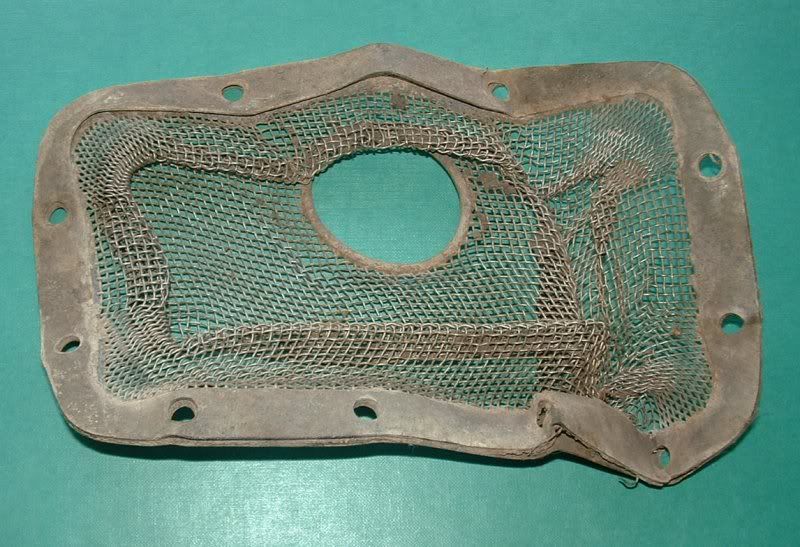
It's a filter from a Bendix Stromberg PD-12H2 carburettor, as fitted to all Wright Cyclone R-1820-97 engines on B-17s.
Amore intact (if a little dirty) example can be seen below, on one of Texas Raiders' engines during rebuild.
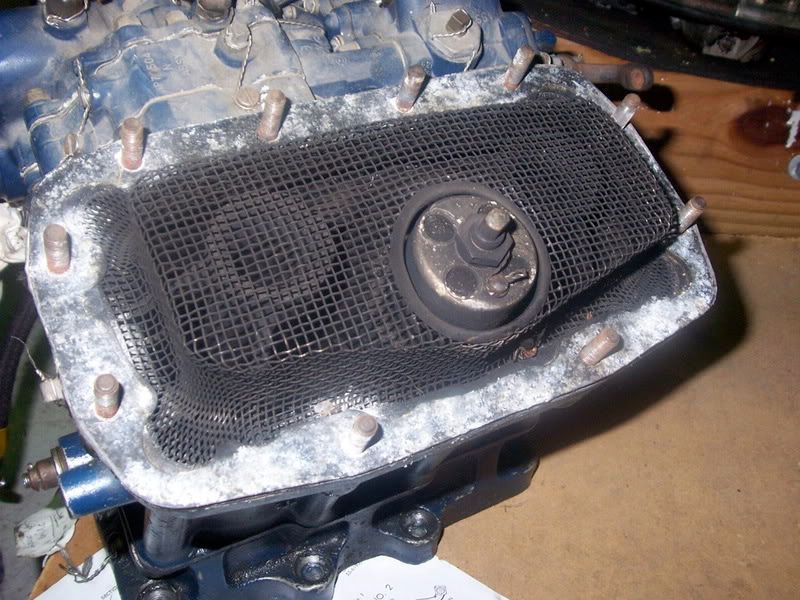
All the best,
Paul
Paul Bellamy

|
donaldbyers
5/29/2009 4:59:51 PM | Very good Paul I enjoy seeing all the pictures you have on this page. Hope the two of you will turn up a lot more on your stroll through the fields. Congrats on the Job also Dale.
Don
Sgt. Donald C. Byers, 613th Bomb Squadron, Togglier, 42-97344 Carrie B II, KIA 08/24/1944.
|
EDanaII
5/30/2009 12:01:07 PM | Good job as always, Paul. 🙂

|
Phoenix
5/31/2009 4:02:07 AM | Paul,
Mind to late this week sounds good to me just pass the word and I'm on, be interesting to mooch around with someone who won't suffer like my poor wife does when we visit the field 😂 Although she did find a 50 cal. spent cartridge case two weeks ago 😃 I'm not allowed to forget that 🙄
Tallyho
Dale
improvise, adapt, overcome
|
VernsDaughter
6/14/2009 6:05:55 PM | Very interesting . . . thanks for sharing! Jean
|
Paul Bellamy
7/13/2009 7:37:38 AM | Further information on the HILV installation, referred to as High Lighting, at Deenethorpe has turned up in the Control Tower Logs.

Wednesday 23rd August 1944
1415 hrs
Airfield inspected.
Concrete repairs in progress on Runway No. 10/28.
High Lighting being installed on Runway No. 05/23.
Saturday 26th August 1944
0930 hrs
Electricians working on High Lighting on Runway No.05/23.
Sunday 3rd September 1944
1730 hrs
Inspected airfield.
One of the new incandescent lights smashed by IN-R landing from mission and swinging off runway due to flat tyre.
Tuesday 5th September 1944
1000 hrs
Airdrome inspected.
Electricians working on Hi-Lights on Runway No.23 advise installations expected to be completed by the end of the week.
It would appear the total installation (on the main runway only) took just three weeks to put into place.
Something else that turned up relating to runway and approach funnel markings:
Friday 10th March 1944
0955 hrs
Capt. Clements rang to say that Col. Bowman, in consultation with 1st. Division, had recommended a strip of paint on runways for aircraft to land at, as a last point of touchdown.
Air Corps Supply now trying to obtain yellow paint for this purpose.
Thursday 7th September 1944
0900 hrs
Requested Clerk of Works to have runway numbers, marshalling posts and full stop signs completed and set up as soon as possible.
He promises prompt action.
Thursday 21st September 1944
0930 hrs
Requested Mr. Shaw to finish painting full stop signs on perimeter track - he is waiting for paint!
Also asked him to have the iron railings on top of the tower painted as soon as possible as it is rusting badly - he promises that our marshalling posts will be ready in a few days. Also that our identification letters for the main funnels are in the process of construction.
1806 hrs
1st. Division - six B-17's in the area short of gas. High Lighting put on and standing by.
1905 hrs
High Lighting turned off as Division reports all B-17's are down.
1945 hrs
Sandra lights exposed for Spanhoe's C-47's.
2110 hrs
Sandra lights turned off. All Spanhoe's C-47's down OK.
It would appear Mr Shaw managed to find some paint in the end, as here's one of the aforementioned Full Stop signs in a photo taken a few days after the above diary entry:
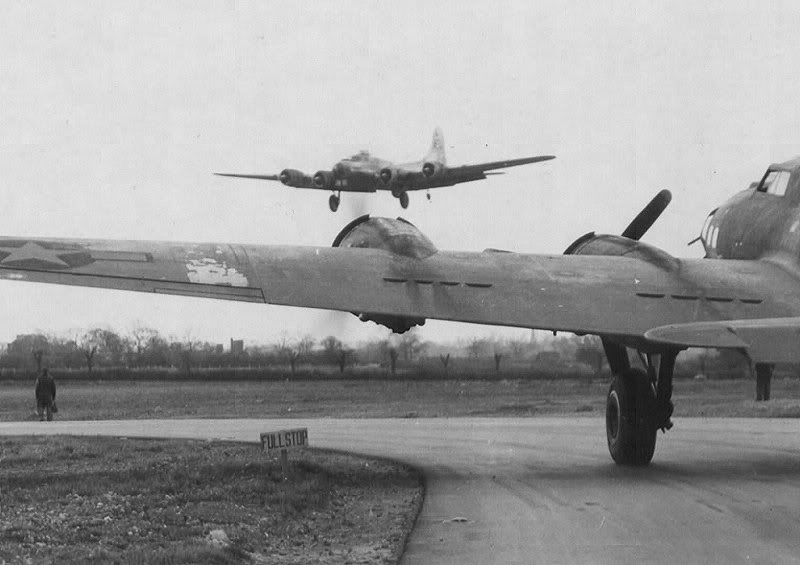
Also visible is a T1 taxiway light, which would appear to have been raised following Tarmac being applied to this section of the perimeter track at the end of Runway 33.
To the left of the Full Stop sign can just be seen two more, positioned next to each other as a hold position.
All the best,
Paul
Paul Bellamy

|
win-win
7/13/2009 7:01:53 PM | Paul:
Great photo - Any info on location or ID of the two B-a7s?
Win
|
Paul Bellamy
7/14/2009 2:50:43 AM | Ta Win,
It's a cleaned-up crop from photo 65533AC.
The location is the eastern end of the southern perimeter track, where it swings around to meet the end of Runway 33.
Visible on the horizon are the buildings of the eastern communal site, and the spire of Lower Benefield Church.
The B-17 on the ground is IY-X 42-31485 "Old Ironsides".
I'm working on the identity of the one on approach, but I doubt I can get an ID from the photo.
All the best,
Paul
Paul Bellamy

|
Paul Bellamy
1/26/2011 6:50:45 PM | A couple of crude quick screen grabs showing the two types of runway lighting at Deenethorpe as viewed from a landing aircraft, both from roughly the same approach into the northern end of the main runway.
The original RAF-installed Drem MkII approach funnel and runway lighting:
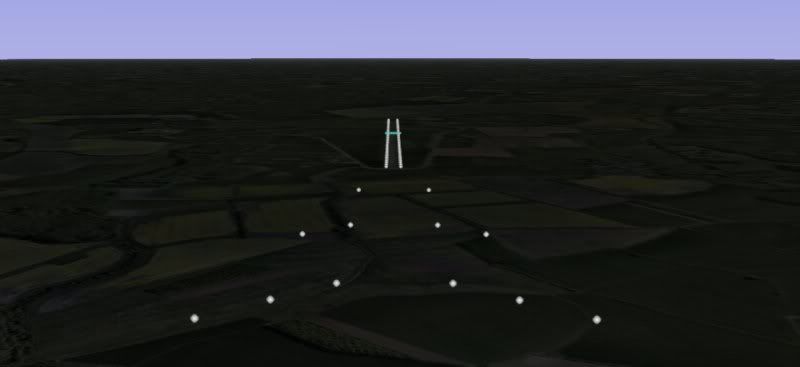
And the USAAF HILV lighting fitted in late summer 1944:
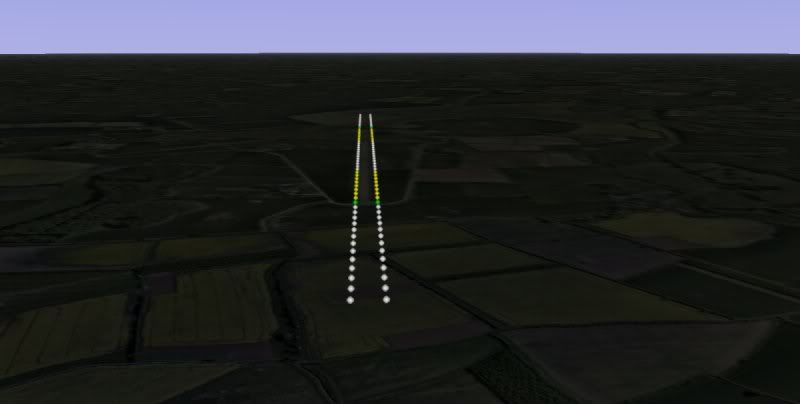
All the best,
Paul
Paul Bellamy

|
donaldbyers
1/26/2011 7:17:20 PM | Thanks Paul,
It is always good to see your tallent small or big time!!!!!
Don
Sgt. Donald C. Byers, 613th Bomb Squadron, Togglier, 42-97344 Carrie B II, KIA 08/24/1944.
|
Paul Bellamy
1/27/2011 10:55:52 AM | Updated the images today, correcting a couple of errors I'd made.
Drem MkII with spacings corrected and lead-out lights added.
Glide Angle Indicators, "Totem Poles", sodium approach lights, etc. still to be added:
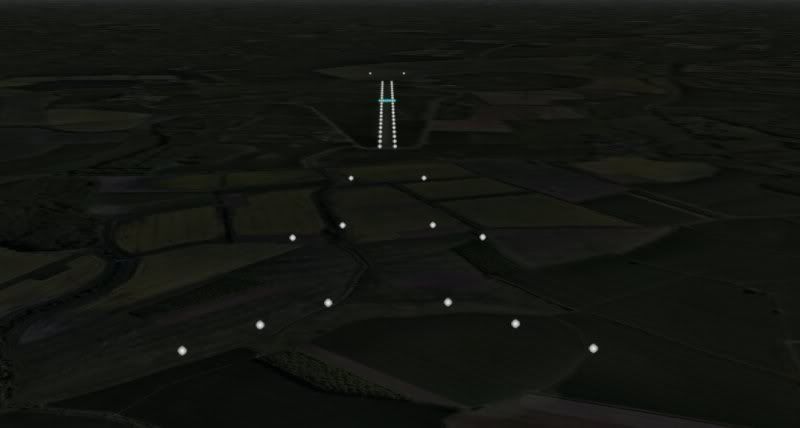
The three groups of lights in the foreground were the approach funnel, outer to inner. The inner funnel lights seen at the far end of the runway were used as a horizon guide.
The line of blue lights is 800 yards from the far end of the runway, and indicated the last point that it was thought safe to touch down on landing.
HILV tweaked.
The green lights indicate the ends of the runway, while the yellow lights at the far end do the same "go around if not down" job as the blue Drem crossbar above.
HILV lamps were non-directional, so the nearmost yellows would be counted as white lights. When used in conjunction with the SCS-51 Instrument Landing System the guided touchdown point would be about halfway along the first yellows. The lines of white lamps outside the green threshold lights formed a basic approach funnel:
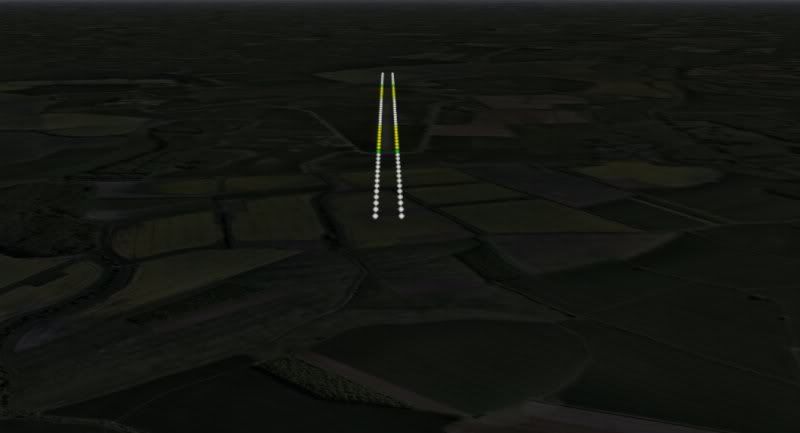
Both Drem and HILV together, to show relative arrangements:
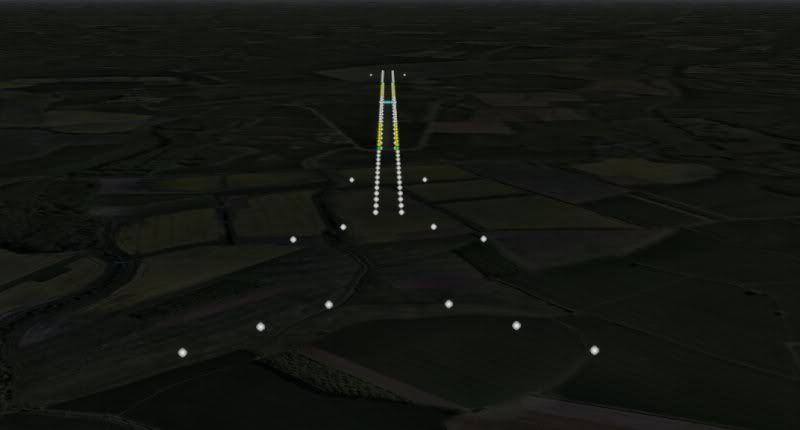
And the S&L/British Steel system, no idea of the colours or directionality of this one:
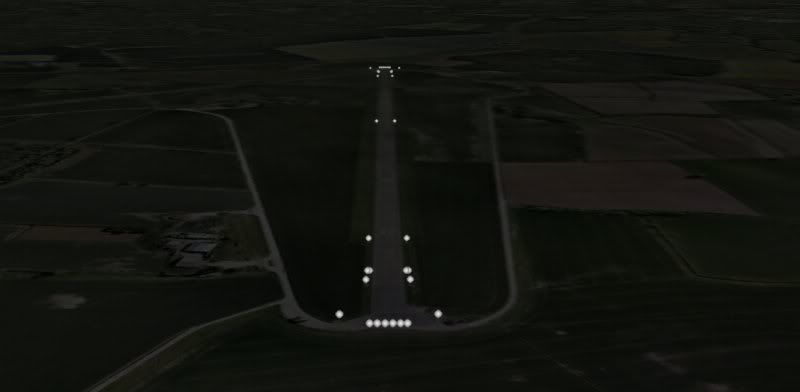
Paul
Paul Bellamy

|
Paul Bellamy
1/28/2011 7:19:52 PM | Another twiddle to the GE lighting model.
Best-fit Outer Circle and Lead-in Strings laid out in Sketchup, working within the guidelines for such as laid down by the Air Ministry:
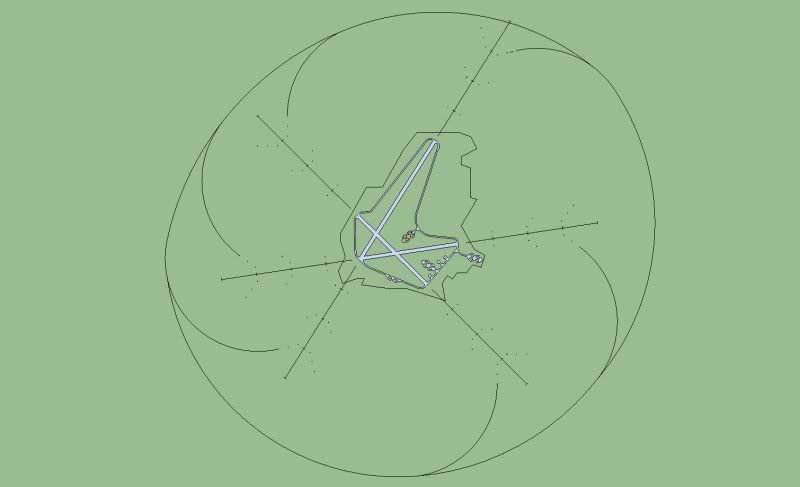
Transferred into GE and lights plotted, I need to reduce the size of the lights though to be more accurate as to what would be visible from a circling B-17 at dusk:

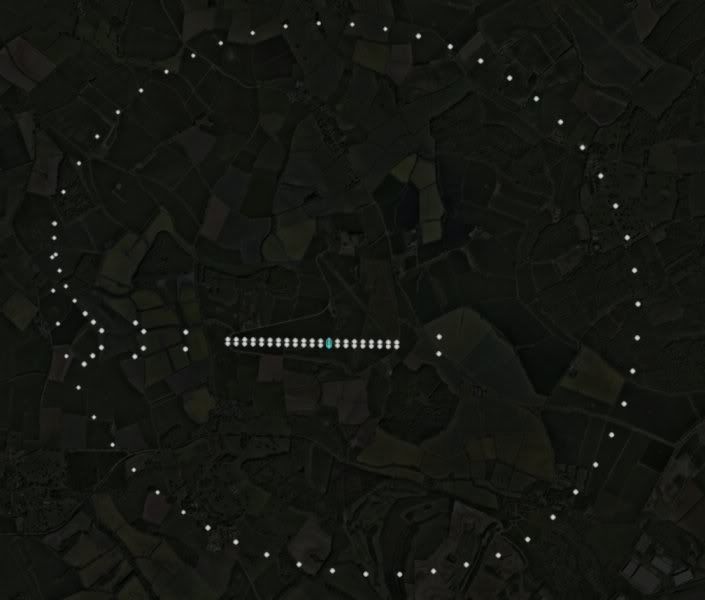
For those who are far better than me at building things in flight simulators, I can provide the layout diagrams and light details if they can be added to the Deenethorpe sim. 🙂
All the best,
Paul
Paul Bellamy

|
donaldbyers
1/28/2011 7:59:29 PM | I had no Idea that the lighting of the airfield was so extensive....
Don
Sgt. Donald C. Byers, 613th Bomb Squadron, Togglier, 42-97344 Carrie B II, KIA 08/24/1944.
|
Paul Bellamy
1/28/2011 8:15:16 PM | I've not yet added all the other bits and bobs that made up the Drem system yet. :twisted:
There are a number of things referred to in the Control Tower Logs that are part of the system, hopefully by the time I finish this section all will become clear. 😉
As an example, the "Sandra Lights" used on the 21st September 1944 to aid the C-47s from Spanhoe were three searchlights placed around the airfield which would be aimed upwards to form a triangle, as a visual marker. Once the aircraft had crossed the Sandras and signalled they knew where they were, the searchlight nearest their home base would be aimed along the ground in that direction for them to follow.
All the best,
Paul
Paul Bellamy

|